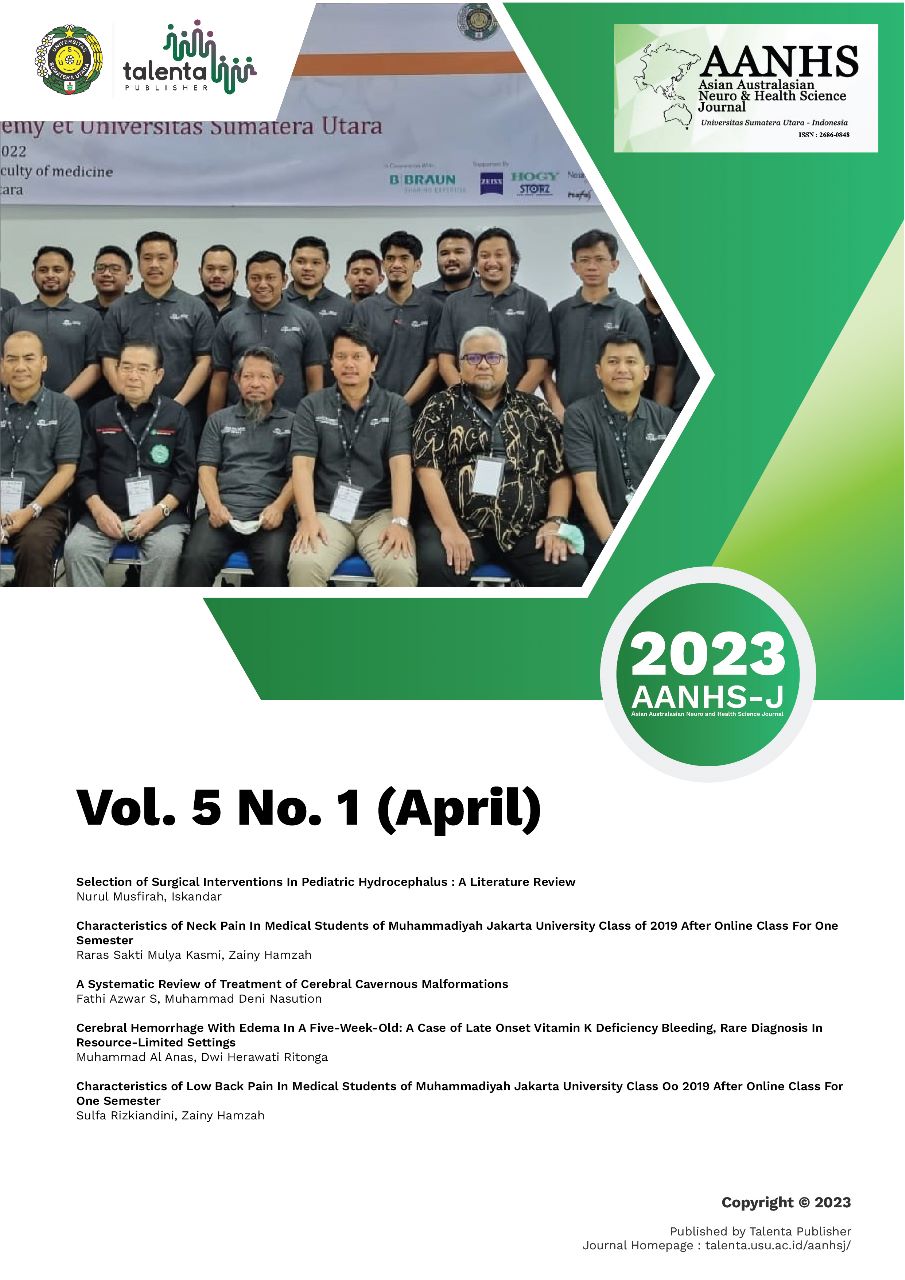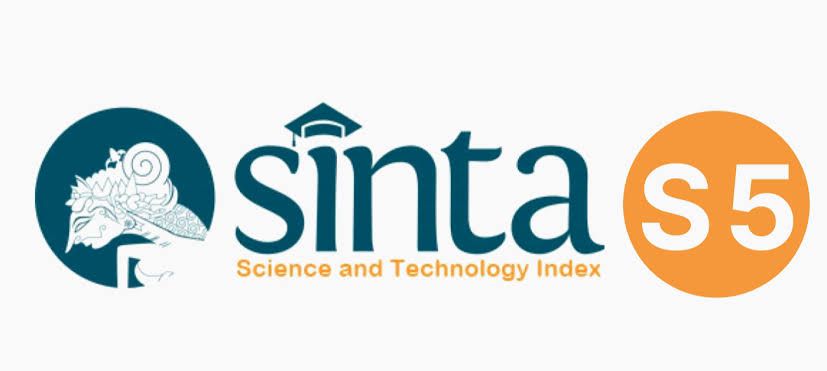A Systematic Review of Treatment of cerebral cavernous malformations
DOI:
https://doi.org/10.32734/aanhsj.v5i1.11247Abstract
Introduction: Cerebral cavernous malformations (CMs), also known as cavernomas, are brain vascular anomalies that consist of clusters of aberrant, hyalinized capillaries surrounded by hemosiderin deposits and a gliotic border. CMs are also known as cavernomas. The vasculature is filled with blood and can exhibit varying degrees of thrombosis. The familial form of CMs is inherited in an autosomal dominant manner and is caused by a heterozygous mutation in one of the three genes, CCM1, CCM2, and CCM3, which may be located on the 7q, 7p, and 3p chromosomes, respectively. This type of CMs affects only one member of the immediate family. Patients diagnosed with CMs make up anywhere from forty to sixty percent of those who have the familial variety. Treatment options for CM lesions include microsurgery, stereotactic radiosurgery, and conservative care. The most common procedure is called a microsurgical resection.
Method: The aim of study of this study to investigate the treatment of cerebral cavernous malformations. This study used the literature review method by discovering articles using the search engine PubMed and SagePub and 6 articles met the inclusion criteria in this study.
Result: According to the findings of the study, there were no significant variations in patient outcomes in terms of the frequency of seizures between those patients who had surgery and those who received conservative medicinal treatment.
Discussion: Cavernous malformations are intracerebral anomalies that were only brought to our attention in a meaningful way after the development of MRI technology. They are relatively frequent. Treatment includes microsurgery and radiosurgery. Microsurgery cures the patient but has substantial problems with complications, deterioration and partial removal. Cavernomas that were previously inoperable can now be treated with stereotactic radiosurgery. More research is required to fully understand the long-term neurological implications of SRS. In order to evaluate the efficacy of cavernoma treatments, the natural history of the tumors must be investigated.
Conclusion: Microsurgery, stereotactic radiosurgery, and conservative management treat CM lesions. Microsurgical resection is most common. Stereotactic radiosurgery can now treat inoperable cavernomas. SRS's long-term neurological effects need further study. The natural history of cavernomas must be studied to determine therapeutic success.Downloads
Downloads
Published
How to Cite
Issue
Section
License
Copyright (c) 2023 Asian Australasian Neuro and Health Science Journal (AANHS-J)

This work is licensed under a Creative Commons Attribution-NonCommercial-ShareAlike 4.0 International License.
The Authors submitting a manuscript do understand that if the manuscript was accepted for publication, the copyright of the article shall be assigned to AANHS Journal.
The copyright encompasses exclusive rights to reproduce and deliver the article in all forms and media. The reproduction of any part of this journal, its storage in databases and its transmission by any form or media will be allowed only with a written permission from Asian Australasian Neuro and Health Science Journal (AANHSJ).
The Copyright Transfer Form can be downloaded here.
The Copyright form should be signed originally and sent to the Editorial Office in the form of original mail or scanned document.














